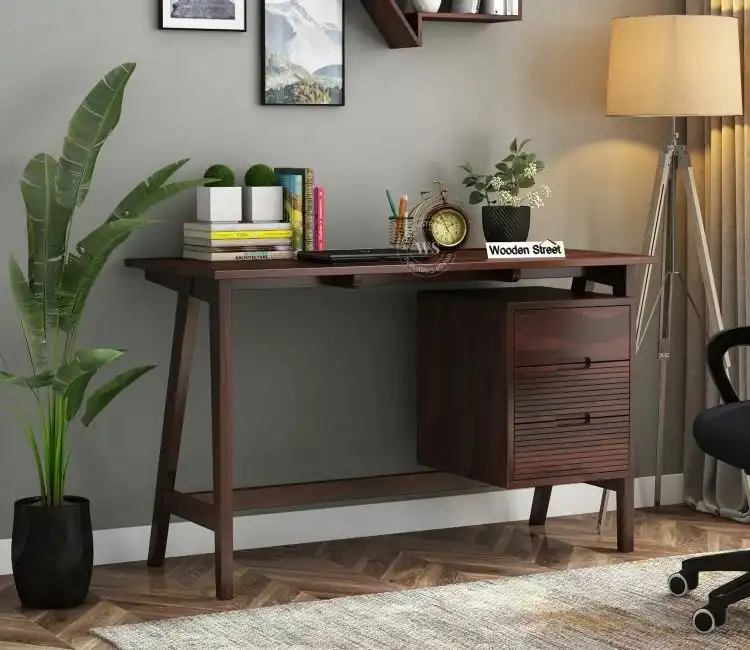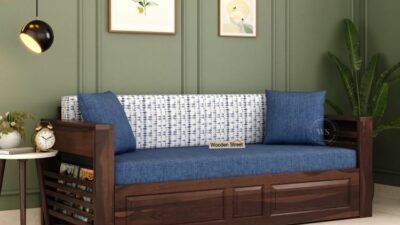
In today’s fast-paced world of hybrid learning and work-from-home culture, having a dedicated study space has become a necessity rather than a luxury. But more than just owning a study table, where you place it can significantly influence focus, motivation, and productivity. This article explores the psychology behind study tables placement, how it affects learning, and tips for optimizing your space using study tables with storage and study tables with drawers.
Why Study Table Placement Matters
The concept of environmental psychology reveals that our surroundings influence our thoughts, emotions, and behaviors. Just as natural lighting boosts mood and energy, the right study tables placement can help foster concentration and minimize distractions.
Placing your study table in a cluttered, poorly lit, or noisy area can hinder your ability to concentrate, while a well-positioned study table with storage can increase focus, reduce mental fatigue, and improve your learning outcomes.
The Ideal Study Table Location Based on Psychology
1. Face a Wall for Deep Focus
Placing your study tables against a wall with minimal visual distractions helps eliminate unnecessary stimuli. This arrangement reduces the temptation to look around the room or out the window, helping your mind stay anchored to the task.
2. Natural Light for Enhanced Productivity
Positioning your study table near a window allows access to natural light, which has been shown to regulate sleep-wake cycles, boost mood, and improve focus. However, ensure the light doesn’t create glare on screens or books—side lighting often works best.
3. Avoid High Traffic Areas
Psychologically, background movement can be as distracting as noise. Place your study table with drawers in a quiet corner of your home, away from the TV, hallway, or kitchen. This helps reduce interruptions and fosters a “zone of focus.”
4. Maintain a Clear View of the Door
Some psychologists recommend facing the door from a distance. This is tied to a subconscious need for security. If your back is to the door, you may feel uneasy or alert—conditions that interfere with deep work.
Study Table and Vastu: A Cultural Perspective
In Indian homes, Vastu Shastra also emphasizes study table placement. It recommends placing the study tables in the northeast or east corner of the room, as these directions are believed to enhance knowledge and concentration. According to Vastu, a clutter-free study table with storage helps students absorb and retain information better.
The Role of Storage in Psychological Clarity
Visual clutter leads to mental clutter. A well-organized study table with drawers allows you to store books, stationery, and gadgets neatly, creating a minimalist surface ideal for focused work. When everything has a place, your brain doesn’t waste energy scanning your environment, enabling better retention and problem-solving.
- Study tables with storage: Keeps essentials within reach but out of sight, reducing distractions.
- Study tables with drawers: Ideal for filing papers, organizing notes, and hiding cables—creating a clean, distraction-free workspace.
Personalizing the Space for Emotional Engagement
Psychologically, we perform better in environments that feel comfortable and reflect our personality. Add motivational quotes, calming plants, or meaningful artwork above your study table to create an emotionally supportive environment.
- For children, bright colors and inspirational stickers may increase engagement.
- For teens, minimalist designs with tech integrations work best.
- For adults, ergonomic study tables with drawers in warm, natural tones enhance sophistication and calmness.
The Influence of Screen Position and Posture
Poor screen positioning causes physical discomfort, which can disrupt mental focus. Your study table should accommodate a screen at eye level and promote upright posture. Consider a study table with drawers and a monitor stand or adjustable chair to support correct ergonomics.
Posture and placement go hand-in-hand—when you’re physically comfortable, your mind is freer to concentrate.
The Flexibility of Modern Study Table Designs
Today’s study tables are no longer just static pieces of furniture. Modular, wall-mounted, and foldable study table designs allow flexibility in placement, helping you adapt to changing spaces and needs.
If you lack a dedicated study room, a compact study table with storage can transform your living room corner or bedroom into a functional learning zone.
Tips to Find Your Perfect Study Table Placement
- Test multiple locations: Sit with your study table in different rooms for a day each and assess your productivity.
- Use plants or bookshelves as buffers: If distractions are unavoidable, create visual boundaries.
- Keep light sources adjustable: Desk lamps and natural lighting should be modifiable based on time of day.
- Ensure power access: Place the table near outlets if you need to charge devices frequently.
- Keep air flowing: A fresh breeze can boost alertness and mood.
Conclusion: Design Your Learning Destiny
The right study table placement can be the silent force that drives academic success, career growth, or personal development. Whether you invest in a stylish study table with drawers or a minimalist wall-mounted desk, remember that placement is just as vital as the design.
Pay attention to how a corner makes you feel. Does it inspire focus? Does it calm your thoughts? Trust your instincts, and with a little trial and error, you’ll create a study space that aligns with both psychological comfort and practical needs.



